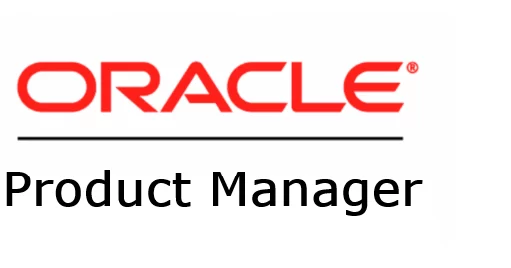We’re excited to announce the release of CPAT version 25.6.0, available since June 17, 2025. This update introduces powerful new features designed to enhance your migration experience and reinforces CPAT’s commitment to simplifying and streamlining cloud migrations through comprehensive reporting and flexible execution modes.
My favorite addition is the option:
--gatherdetailsThis option was created to enhance the information collected from the database and help customers gain a better overview of it. There is also a planned integration with OEE (Oracle Estate Explorer). Soon, you will be able to use CPAT as a data source for OEE.
For now, you can use:
- all – fetch all possible details (except performance metrics needed by Oracle Estate Explorer)
- none – do not fetch any additional details
- oee – fetch additional details needed by Oracle Estate Explorer
- oee_full – fetch all additional details needed by Oracle Estate Explorer, including performance metrics. Be aware that fetching these performance metrics can take a considerable amount of time. Also, this requires a Diagnostic Pack license.
- schema_objects – fetch details about the schema objects belonging to the schemas being migrated. If both all and none are specified then none will be ignored and all will be used.
A few items are still only available in the JSON file, but we are working on making most of them available in the HTML report as well.
We now include information about server memory, SGA, PGA, CPUs, Data Guard, and Supplemental logging:

Information about High Water Mark Statistics:
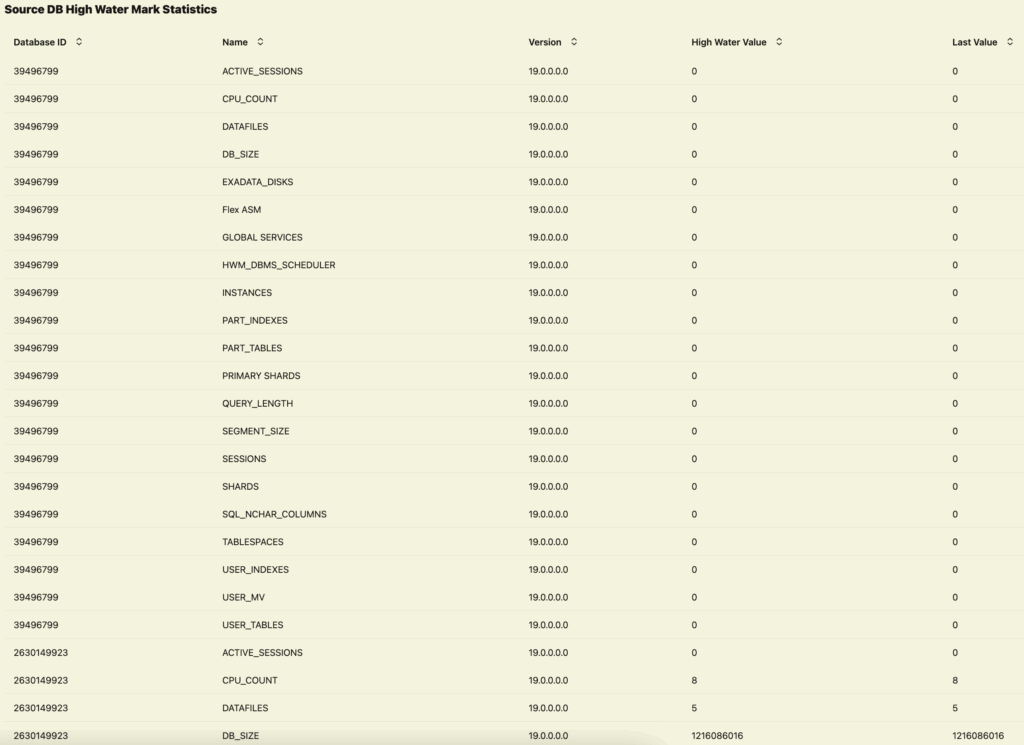
Information about Logon Triggers and HCC tables:

Schema summary, including tables, indexes, lobs, invalid objects, column type distribution, the largest tables/objects, etc.
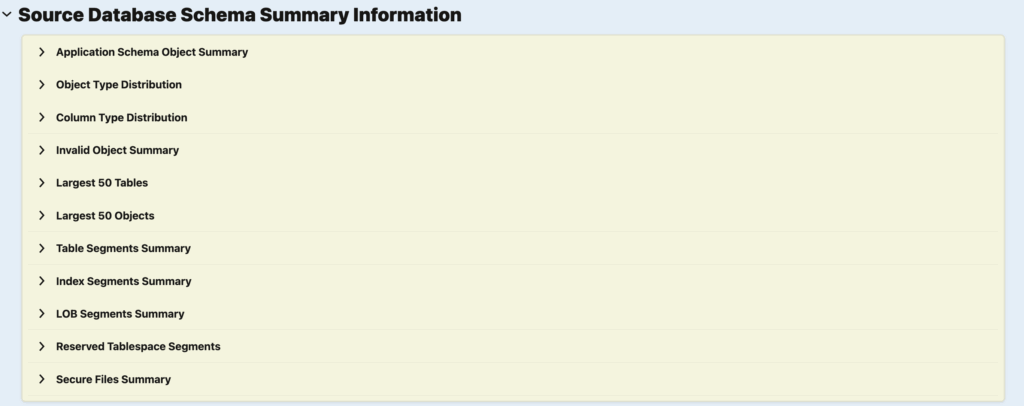
Database options installed:
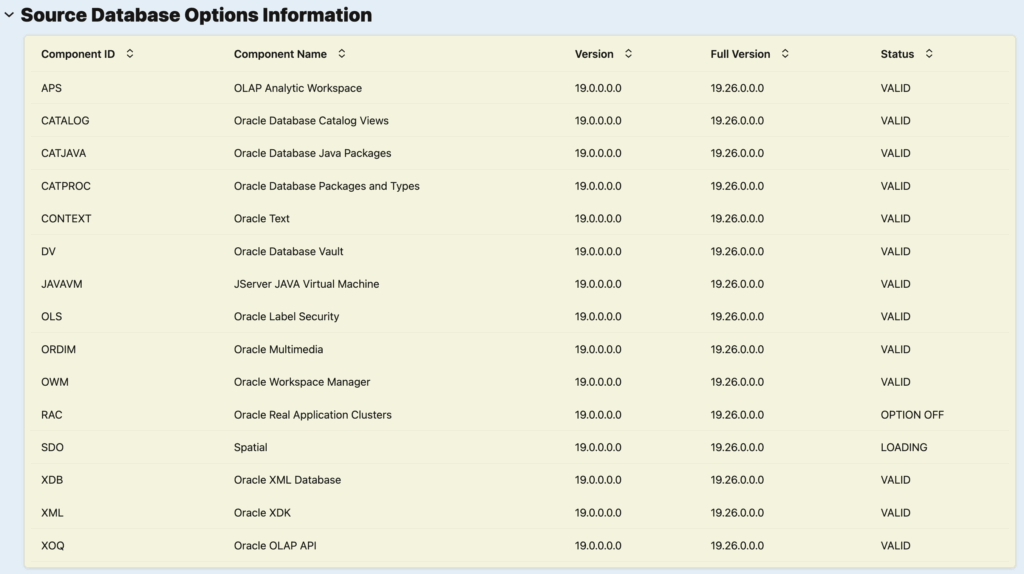
NLS Parameters:
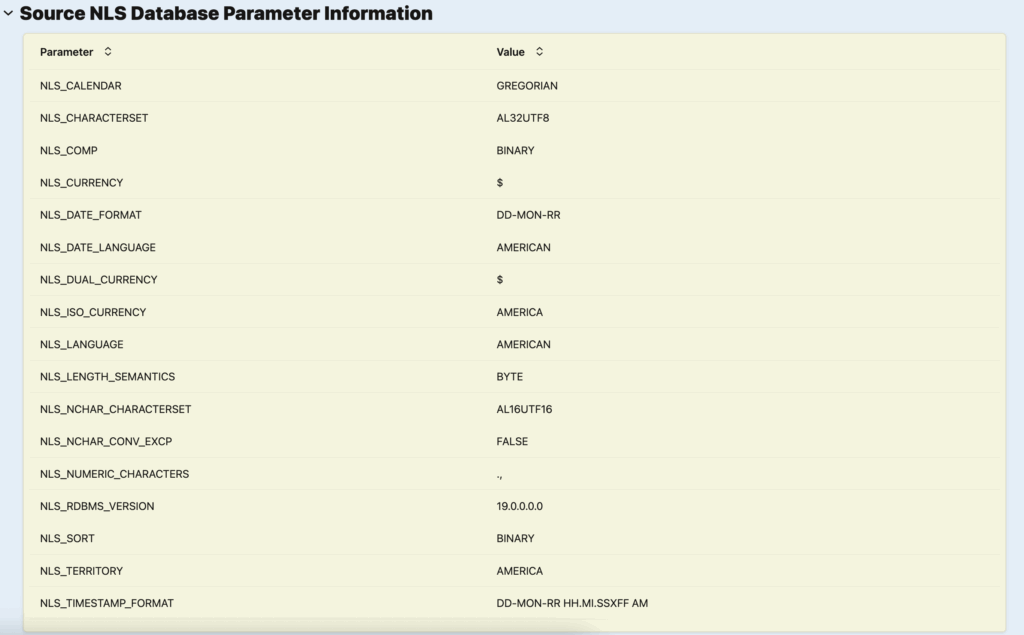
Database parameters:
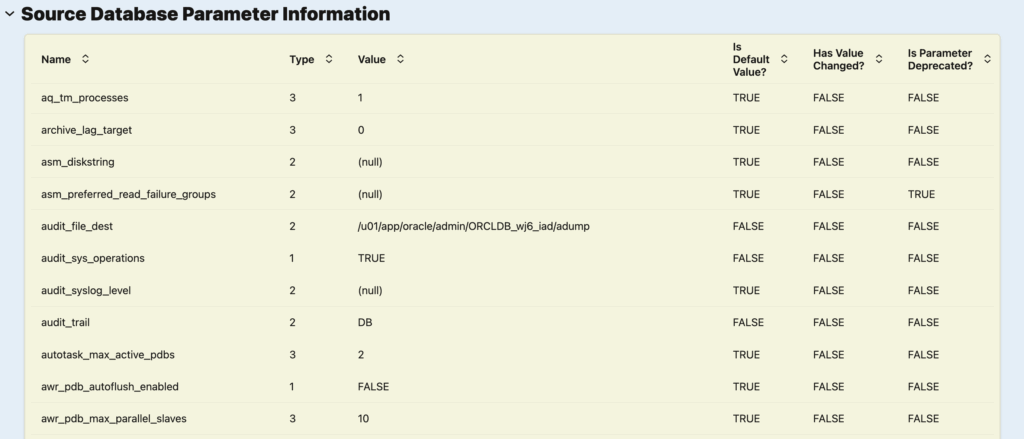
Instances:

Tablespaces and DataFiles:
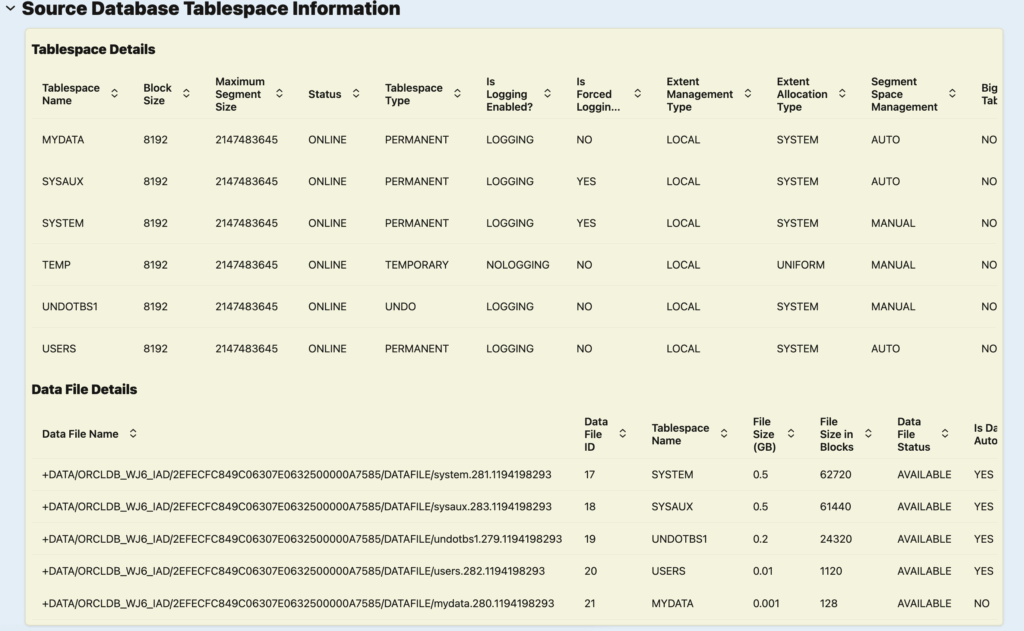
Another great addition to CPAT is now the ability to run CPAT interactively via CLI and to securely store credentials for automated, unattended executions.
CPAT now supports a Command-Line Interface (CLI) mode: In CLI mode, you can interactively run source analysis through the command-line interface for one or more databases at a time. Through its “load password” functionality, you can also store encrypted database credentials in a local keystore, which will allow you to run automated, unattended analysis. When you combine CLI mode with the --noconsole flag, CPAT operates in multi-analysis mode, running multiple analyses sequentially without user prompts. To execute multiple analyses in batch using a configuration file and stored passwords, use the following command:
Examples:
#Cli mode:
/premigration.sh --parfile <config-file-path>
#No console mode:
/premigration.sh --noconsole --parfile <config-file-path>
#Load password mode:
/premigration.sh --parfile <config-file-path> --loadpassword
Example Configuration File (multi-database):
# Database 1
a.targetcloud=ATPD
a.reportformat=json,text,html
a.outfileprefix=DB1
a.username=SYSTEM
a.connectstring=<connectstring>
a.migrationmethod=GOLDENGATE,DATAPUMP
a.full=true
a.pdbname=ORCLPDB1
# Database 2
b.targetcloud=ATPD
b.reportformat=json,text,html
b.outfileprefix=DB2
b.username=SYSTEM
b.connectstring=<connectstring>
b.migrationmethod=GOLDENGATE,DATAPUMP
b.full=true
b.pdbname=ORCLPDB1
# Database 3
c.targetcloud=ATPD
c.reportformat=json,text,html
c.outfileprefix=DB3
c.username=SYSTEM
c.connectstring=<connectstring>
c.migrationmethod=GOLDENGATE,DATAPUMP
c.full=true
c.pdbname=ORCLPDB1
Managing Credentials with Load Password Mode (example):
Starting CPAT Password Loader - Type help for available options
Creating new CPAT keystore - Password required
Enter password:
Enter password again:
CPAT keystore was successfully created
>> add orcdb2 -user system
Enter your secret/Password:
Re-enter your secret/Password:
Done
Database Name Space: orcdb2 User: system
>> list
Database Name Space: orcdb2 User: system
>> add orcdb2 -user SYSTEM -nocheck
Replacing existing entry system.
Enter your secret/Password:
Re-enter your secret/Password:
Done
Database Name Space: orcdb2 User: system
>> exit
Save the CPAT keystore before exiting [YES|NO]? yes
Convert the CPAT keystore to auto-login [YES|NO]? yes
These features enhance automation, security, and flexibility when
executing CPAT across multiple environments. For a complete list of
supported options and usage patterns, refer to CPAT’s --help output
or consult the official documentation.If you have any information that you believe would be valuable to include in CPAT, please feel free to contact us.
Links to the Complete Blog Post Series about CPAT:
- FAQ
- Part 1 – Starting with CPAT
- Part 2 – Options for Running CPAT
- Part 3 – Running CPAT
- Part 4 – Troubleshooting CPAT
- Part 5 – CPAT Checks
- Part 6 – CPAT New Features – December 2024
- Part 7 – Cloud Premigration Advisor Tool (CPAT) Composer
- Part 8 – CPAT New Features – June 2025
- Part 9 – CPAT – How to Use a Parameter File
- Part 10 – CPAT New Features – September 2025
